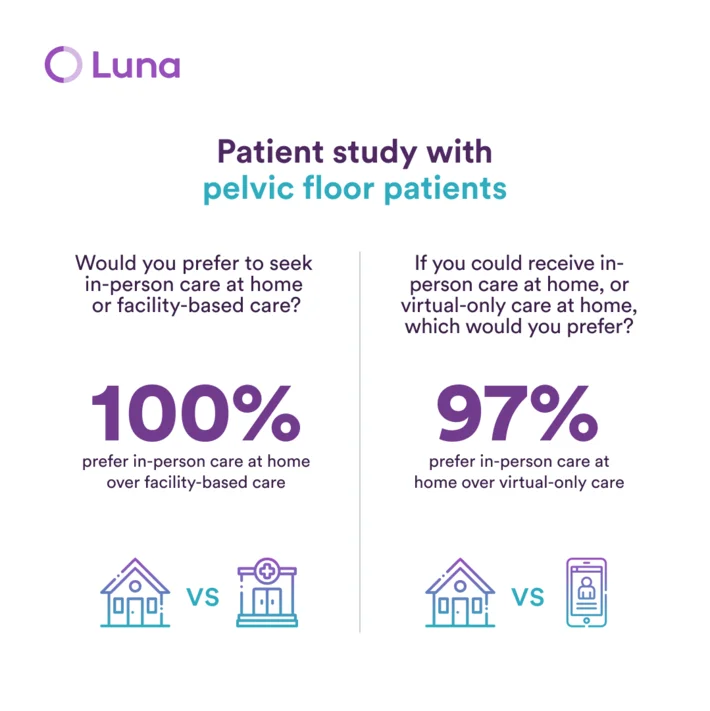
Meet with the best pelvic floor therapy physical therapists in Boston, Massachusetts
Boston, Massachusetts, Luna employs physical therapists with experience and expertise in the treatment of pelvic floor dysfunction. Our certified physical therapists manage the symptoms of pelvic floor dysfunction with cutting-edge exercises that can help to reduce constipation and increase patient control over their pelvic floor.
Best of all, with Luna, patients can receive treatment in the comfort, familiarity, and privacy of their own homes. Our physical therapists come to you: It’s physical therapy, delivered.

What is pelvic floor dysfunction?
A group of muscles at the base of the pelvic area, the pelvic floor supports and controls the pelvic organs, including the rectum, bladder, uterus, vagina, and prostate.
Those who suffer from pelvic floor dysfunction are unable to properly contract and relax this group of muscles, which can interfere with urination and bowel movements. Many patients frequently suffer from incomplete bowel movements, discomfort during sexual intercourse, and urine or stool retention.
While pelvic floor dysfunction is often associated with pregnant women, both men and women (whether pregnant or not) can develop the condition. Left untreated, pelvic floor dysfunction can lead to chronic discomfort, infection, and in rare cases long-term damage to the colon.
Source: Cleveland Clinic

What causes pelvic floor dysfunction?
The causes of pelvic floor dysfunction are not precisely known; however, the condition is typically linked to events or conditions that weaken the pelvic floor muscles and/or produce tears in the connective tissue. Factors that put pressure on the pelvic floor or injure the pelvic muscles are known contributors to the eventual development of pelvic floor dysfunction.
The most common causes of Pelvic Floor Dysfunction include:
- Pregnancy and childbirth
- Age
- Nerve damage
- Obesity
- Traumatic injury to the pelvic region


















